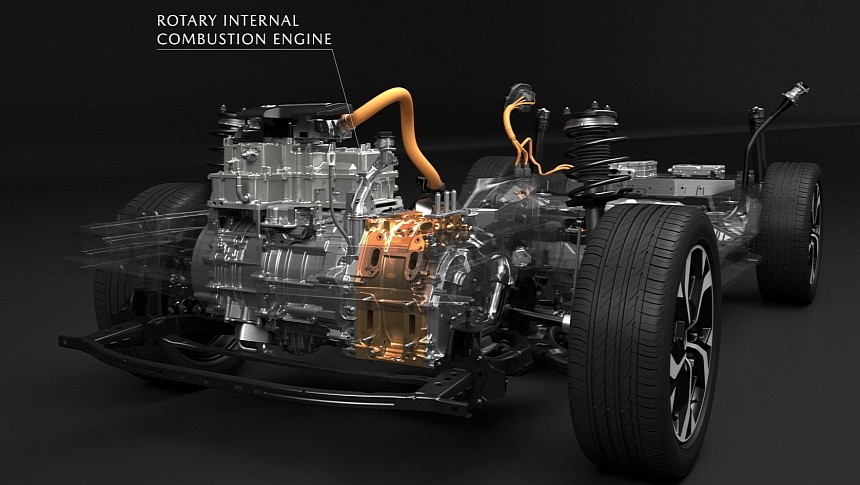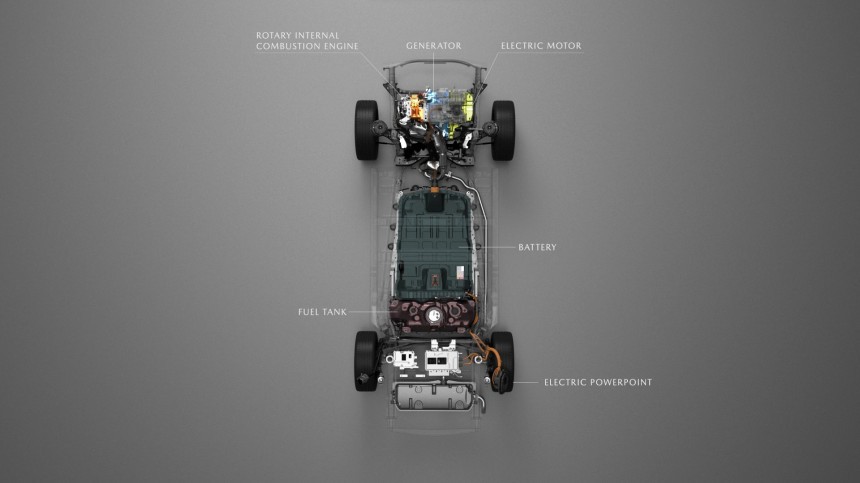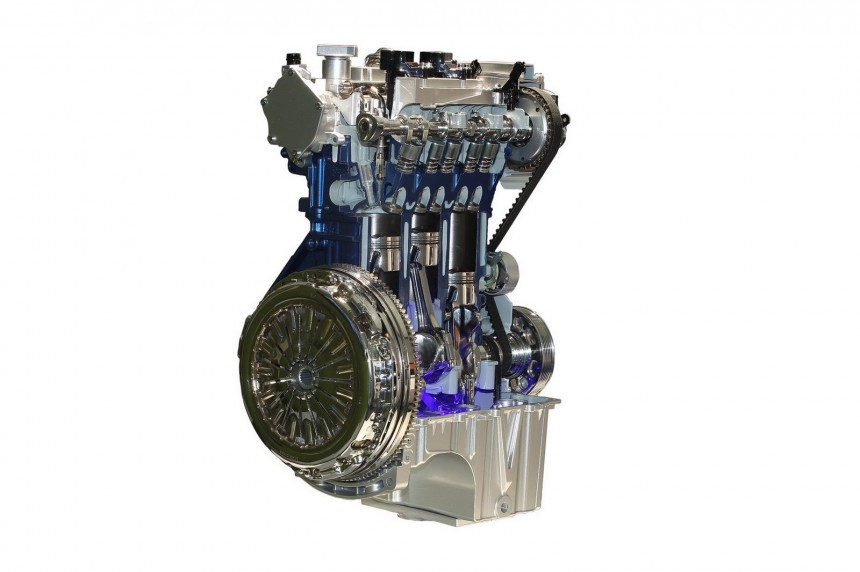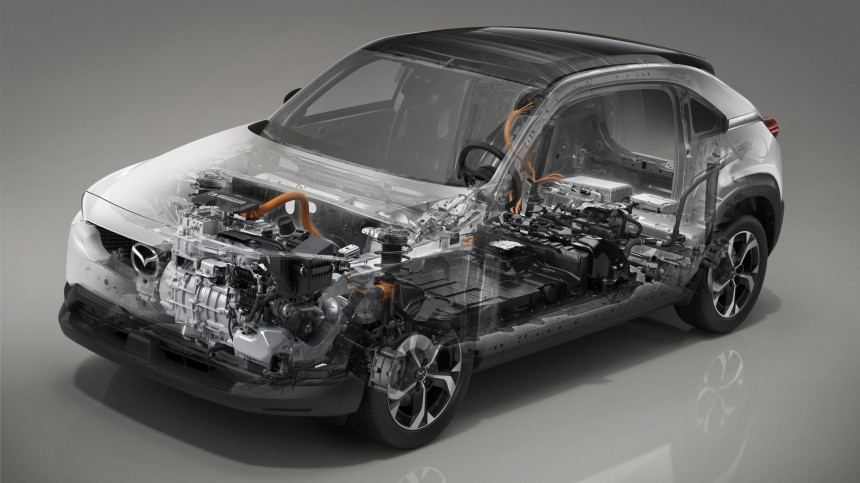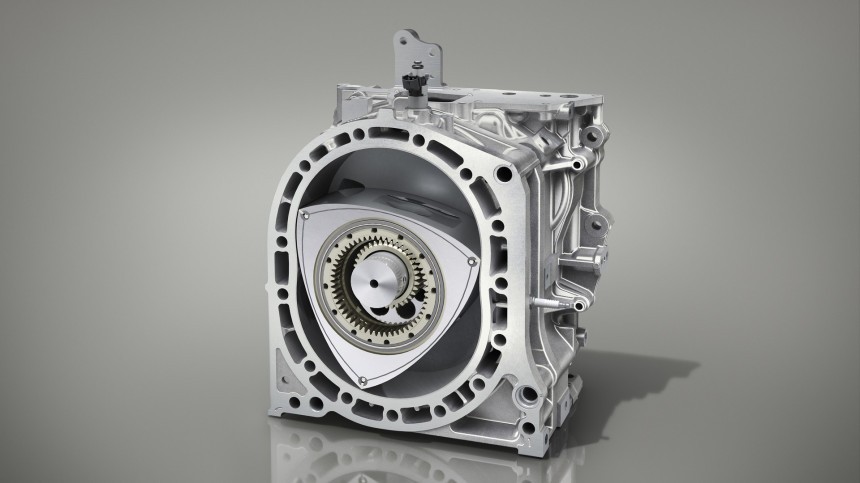When people defend that internal combustion engines (ICEs) still have a role to play in personal transportation, they are correct. Having an electric motor driving the wheels does not necessarily require a massive battery pack, and a lot of people have been trying to demonstrate that. Mazda had a great shot with an unconventional mill design that it spent decades developing. Sadly, the rotary engine did not offer all the advantages it could on the MX-30 e-Skyactiv R-EV – and nothing ensures it will do that in any other model.
Mazda could have followed the same trail its competitors followed by picking up an engine from the shelf and turning it into a range extender. Instead, it chose to create a new edition of its rotary engine. Like some new engine concepts around, it seemed it would be lighter, more efficient, and with fewer noise, vibration, and harshness (NVH) issues than reciprocating mills. I confess that was my expectation about it. However, after seeing the first reviews of this car, it was clearly not the case.
The e-Skyactiv R-EV supposedly is what the MX-30 should have been since it was first presented. Only Mazda thought that a BEV that delivered only 100 miles of EPA range would sell in good numbers. It was a major flop in the US, and it recently had its price reduced in Europe to see if that would move metal more effectively. Reducing the MX-30 EV's price did not work in the past, and it should not be different now. It was and still is too expensive for a vehicle that can drive so little. A range extender and a fuel tank could solve that, but the Japanese carmaker blew it.
I've already written how Mazda would have created a reasonable option if it had just added the rotary engine to the MX-30 EV. The 35.5-kWh battery pack was already insufficient. If it were to reduce it due to weight and cost concerns, the automaker should either have chosen another chemistry or kept it to a minimum. Instead, Mazda cut it in half, leaving it with only 17.8 kWh. That's enough for 85 kilometers (52.8 miles) of range in the WLTP cycle. In other words, it should be less than that, even in the best-case scenario. I have not read a single review in which the journalists managed to deplete the battery pack in these first reviews.
If the target was to keep the mass low, it failed. Autocar stated that the e-Skyactiv R-EV is 131 kilograms (288.8 pounds) heavier than the EV. One reason for that is that the rotary engine also weighs more than it was supposed to, even with only one rotor and a capacity of 830 cubic centimeters (50.7 cubic inches).
The naturally aspirated mill delivers 55 kW (74 hp) and 117 Nm (86.3 pound-feet). Razão Automóvel was pretty specific about the rotary engine weighing 15 kilograms (33 pounds) less than the 13B-MSP Renesis that powered the RX-8. Considering its dry weight was 112 kg (247 lb), that means the rotary machine in the MX-30 tips the scale at 97 kg (213.9 lb). When you check the pictures, it looks lighter, but appearances may deceive. That's the same weight as Ford's 1-liter Ecoboost engine. Thanks to the turbocharger, it delivers 114 kW (153 hp) in its most recent iterations.
With the sole goal of charging the battery pack, a range extender only has to have enough power to keep the battery pack at the desired charge level. Mazda must believe that 55 kW is more than enough for the MX-30. A version of Ford's 1-liter three-cylinder engine was sold in Brazil, India, and some European countries. Called TiVCT, it delivered 58,8 kW (79 hp) and 100 Nm (73.8 lb-ft) with gasoline while tipping the scale at 85 kg (187.4 lb).
Being lighter would make it a great call for the MX-30 if it were more compact and vibrated less. That should be the main advantage of the rotary motor over a conventional three-cylinder mill. Yet, several journalists said Mazda's solution is noisy and noticeable when it fires up and works. It even revs up when the driver accelerates the car, which is certainly a solution the Japanese carmaker found to make drives more engaging.
The issue is that it makes the vehicle less efficient. This must be the reason for Mazda to have given this MX-30 a fuel tank that holds 50 liters (13.2 gallons) of gasoline. The one my 2017 BMW 225xe used was full with 36 l (9.5 gallons). My wife's Suzuki Ignis carries even less: 32 l (8.5 gallons), and it is not even a plug-in hybrid. All of them have a range of around 600 km (373 miles). The Mazda should have easily beaten these other two.
Let's face it: the best solution for the rotary engine noise would have been to isolate it so well that no one would notice it. That would prevent the dull feeling that a constant engine noise would induce, as it happened with first-generation continuously variable transmissions (CVTs). In a way, it exposed what Mazda's main mistakes were. I can see at least two: a wrong model choice and a disregard for efficiency.
The Japanese carmaker publicly disclosed it was against large battery packs. For a small one to present a minimally acceptable range, it should power a sedan or liftback, like the Toyota Prius. Choosing an SUV because they are popular gave this vehicle a larger frontal area and aerodynamic disadvantages. Limiting its top speed to 140 kph (87 mph) did not minimize that penalty. Mazda never disclosed the MX-30's drag coefficient, but it is undoubtedly much higher than that of a Prius. Even if it were similar, the frontal area would kill it for the SUV.
That demonstrates the underlying neglect of efficiency. The Japanese carmaker wanted the battery pack to be small to improve handling. Considering the MX-5 made Mazda famous for getting that right, this concern is more than valid when that does not compromise capability – which was precisely what happened. To make matters worse, Mazda developed an engine that is heavier than what a conventional mill would be. Was it worth it?
The insides of the MX-30 with the range extender make even less sense. The Japanese automaker apparently integrated the electric motor with the generator and the rotary engine. They are all side by side, but there is no reason for joining them: there is no mechanical connection between the engine and the motor. In other words, the ICE does not help the car move. It could be installed anywhere else. Could this whole set weigh 97 kg? Again, Razão Automóvel talked about the engine, not about anything else, so I'll believe them. The only explanations for these elements to be together are saving space under the hood or weight distribution.
What if the Japanese carmaker had given a new engine design a chance? This is what I intend to show in a new series of articles called ICE for REx. There are some new options around, and a few may prove to be what Mazda's rotary engine failed to be: light, silent, and efficient.
The e-Skyactiv R-EV supposedly is what the MX-30 should have been since it was first presented. Only Mazda thought that a BEV that delivered only 100 miles of EPA range would sell in good numbers. It was a major flop in the US, and it recently had its price reduced in Europe to see if that would move metal more effectively. Reducing the MX-30 EV's price did not work in the past, and it should not be different now. It was and still is too expensive for a vehicle that can drive so little. A range extender and a fuel tank could solve that, but the Japanese carmaker blew it.
I've already written how Mazda would have created a reasonable option if it had just added the rotary engine to the MX-30 EV. The 35.5-kWh battery pack was already insufficient. If it were to reduce it due to weight and cost concerns, the automaker should either have chosen another chemistry or kept it to a minimum. Instead, Mazda cut it in half, leaving it with only 17.8 kWh. That's enough for 85 kilometers (52.8 miles) of range in the WLTP cycle. In other words, it should be less than that, even in the best-case scenario. I have not read a single review in which the journalists managed to deplete the battery pack in these first reviews.
The naturally aspirated mill delivers 55 kW (74 hp) and 117 Nm (86.3 pound-feet). Razão Automóvel was pretty specific about the rotary engine weighing 15 kilograms (33 pounds) less than the 13B-MSP Renesis that powered the RX-8. Considering its dry weight was 112 kg (247 lb), that means the rotary machine in the MX-30 tips the scale at 97 kg (213.9 lb). When you check the pictures, it looks lighter, but appearances may deceive. That's the same weight as Ford's 1-liter Ecoboost engine. Thanks to the turbocharger, it delivers 114 kW (153 hp) in its most recent iterations.
With the sole goal of charging the battery pack, a range extender only has to have enough power to keep the battery pack at the desired charge level. Mazda must believe that 55 kW is more than enough for the MX-30. A version of Ford's 1-liter three-cylinder engine was sold in Brazil, India, and some European countries. Called TiVCT, it delivered 58,8 kW (79 hp) and 100 Nm (73.8 lb-ft) with gasoline while tipping the scale at 85 kg (187.4 lb).
The issue is that it makes the vehicle less efficient. This must be the reason for Mazda to have given this MX-30 a fuel tank that holds 50 liters (13.2 gallons) of gasoline. The one my 2017 BMW 225xe used was full with 36 l (9.5 gallons). My wife's Suzuki Ignis carries even less: 32 l (8.5 gallons), and it is not even a plug-in hybrid. All of them have a range of around 600 km (373 miles). The Mazda should have easily beaten these other two.
Let's face it: the best solution for the rotary engine noise would have been to isolate it so well that no one would notice it. That would prevent the dull feeling that a constant engine noise would induce, as it happened with first-generation continuously variable transmissions (CVTs). In a way, it exposed what Mazda's main mistakes were. I can see at least two: a wrong model choice and a disregard for efficiency.
That demonstrates the underlying neglect of efficiency. The Japanese carmaker wanted the battery pack to be small to improve handling. Considering the MX-5 made Mazda famous for getting that right, this concern is more than valid when that does not compromise capability – which was precisely what happened. To make matters worse, Mazda developed an engine that is heavier than what a conventional mill would be. Was it worth it?
What if the Japanese carmaker had given a new engine design a chance? This is what I intend to show in a new series of articles called ICE for REx. There are some new options around, and a few may prove to be what Mazda's rotary engine failed to be: light, silent, and efficient.
